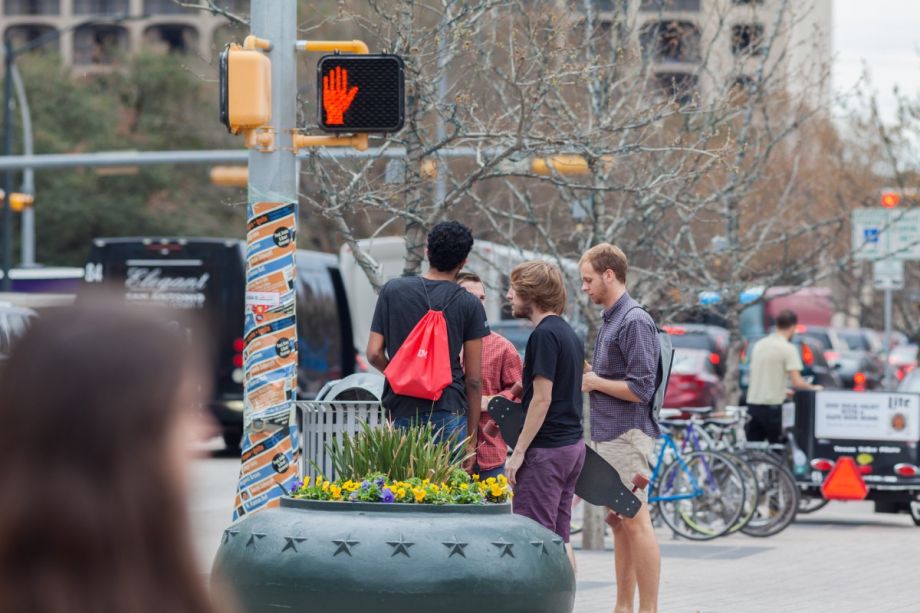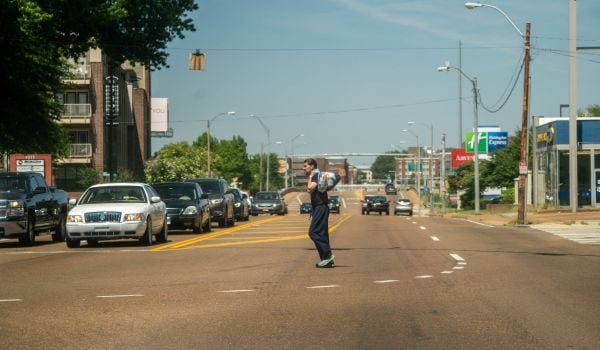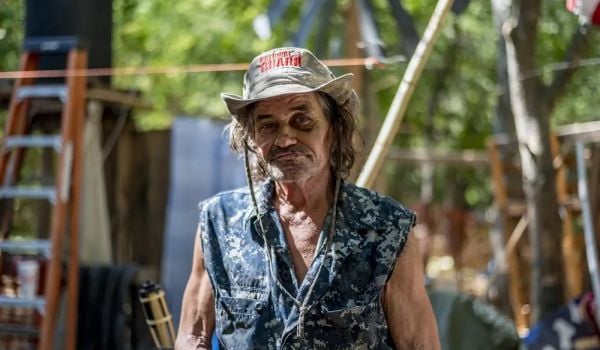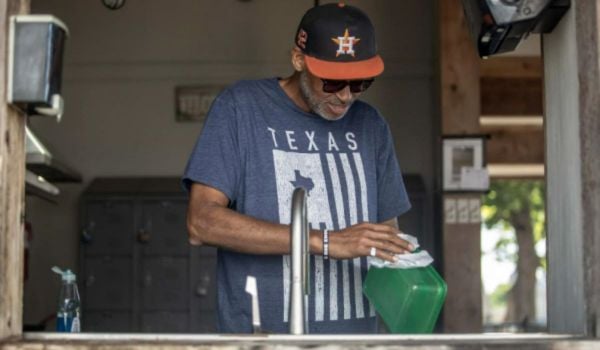Welcome to “The Mobile City,” our weekly roundup of noteworthy transportation developments.
Austin Sees Crashes Fall, Thanks to Vision Zero
Lately, news reports have featured stories of how cities that have adopted Vision Zero programs aimed at cutting traffic fatalities and crashes have instead seen those statistics climb.
So to end the year, here’s news of a city where Vision Zero is working as advertised.
That city is Austin, where Fox 7 reports that the city transportation department is encouraged by the reductions it’s seeing on city roadways where Vision Zero safety improvements have been installed.
The city analyzed data for 13 “high injury roadways” — stretches of road where the greatest number of crashes occur — and intersections where traffic signals have been modified to provide “leading pedestrian intervals” — a 5- to 7-second head start for walkers before the vehicles get a green light.
The analysis found that crashes resulting in deaths or serious injuries at six roadways where safety improvements were completed by this year fell 17 percent from the annual average for 2017-19 (a time period chosen to capture pre-pandemic traffic statistics). Such crashes fell by one percent citywide compared to the same period.
Similarly, at downtown intersections where leading pedestrian intervals were added to the signal cycles, crashes where cars turning left hit walkers fell 54 percent from the baseline period, compared with a 36 percent drop at unimproved intersections.
“These are early results, but the data is promising,” Assistant City Manager for Mobility Gina Fiandaca told the station. “We will continue to evaluate the results to find the most effective and impactful ways to improve safety on our roads, so everyone makes it home to their loved ones each day.”
Overall, though, there’s still work to do: more than 100 Austinites have been killed in traffic crashes this year, up 30 percent from last year’s tally. Of those killed, 35 were not in a motor vehicle themselves when the crash occurred.
Yes, Transit Ridership Fell During the Pandemic, But It Fell More in Some Places than in Others
That transit ridership fell off a cliff after the COVID pandemic sent millions of office workers home is old news by now. Also well-known is that those who continued to ride were largely “essential workers” whose jobs couldn’t be performed remotely. Now transportation researcher Yonah Freemark has provided a more detailed analysis of where ridership fell more, and where it fell less, on rail transit systems across the country.
Writing on the Urban Institute’s “Urban Wire” blog, Freemark presented the results of his analysis of station-by-station boarding data for four of the five most heavily used “heavy rail” rapid transit systems in the country: New York City’s MTA New York City Transit, the Washington Metropolitan Area Transportation Authority’s Metrorail, the Chicago Transit Authority’s rapid transit system and Bay Area Rapid Transit in San Francisco/Oakland.
In 2019, these four systems carried 87 percent of all heavy-rail rapid-transit riders and a third of all transit users nationwide. In 2020, however, the number of riders they carried all fell sharply. But while every station on all four systems showed ridership drops, some stations experienced greater drops while others had much smaller ones.
Freemark found that stations in areas with a smaller percentage of college-educated residents, lower median household incomes, a higher number of low-wage workers and higher percentages of Black residents shed fewer riders than those where the opposite was the case. In addition, stations in job-rich locations also lost more riders than those elsewhere.
With better-educated, more affluent urbanites are likely to continue working from home at least part of the time even after the pandemic subsides, transit agencies should focus their efforts to regain ridership on serving those who use transit more, Freemark said: “By redesigning routes to prioritize social equity—which some transit agencies are doing already—and by making transit more available in high-ridership neighborhoods, cities can maximize access for those who need it most.”
Add Albuquerque to the List of Cities with Fare-Free Transit
Mass Transit reports that New Mexico’s largest city, Albuquerque, will make public transit free to ride effective Jan. 1.
The city’s Zero Fares Pilot Program will make ART bus rapid transit, ABQ RIDE regular buses and Sun Van paratransit free to ride through the end of 2022.
“Access to safe, affordable public transit is one of the best ways for us to create a more inclusive, equitable city and an economy that works for everyone,” said Michelle Melendez, director of the city’s Office of Equity and Inclusion. “This zero-fare pilot will enable many more people to use the transit system to get to school, work and other places they need to go to participate fully in everything our city has to offer.”
The city is paying for the pilot from a $3 million appropriation the city council approved in September 2020. During the pilot, ABQ RIDE will collect data on ridership, security incidents and cost along with feedback from riders to determine whether to continue the free-fare program beyond 2022.
And Finally, We’ve Reached the End of the Line
With this column, “The Mobile City” makes its last trip.
Over the seven years since I took over what was then called “New Starts” from Stephen Smith, this column has shifted its gaze and its focus several times. What began as a chronicle of new mass transit construction projects around the world changed its scope to focus on transit in the United States. Then it broadened its subject matter to cover all aspects of urban transportation, including how the ways we get around affect the quality of city life.
There have been some dramatic changes over those seven years. “Micromobility” barely existed when I began writing this column; today, shared scooters and bikes are a firmly set piece of the transportation jigsaw puzzle. Transit agencies have experimented with more flexible forms of mass transit in order to better serve America’s highly dispersed urban populations, and now, as “The Mobile City” wraps up, those same agencies are learning how to adjust to a dramatically, and suddenly, changed world.
This is a story that continues to unfold. And while it won’t be documented in this column, Next City will continue to write it. Instead of reporting what others have written, however, I will be doing the reporting myself, along with the magazine’s other contributors, throughout the year.
It’s been a fun and interesting ride, and I hope you’ve enjoyed the trip as much as I have. And I hope you will join me on the next leg of this journey.

Next City contributor Sandy Smith is the home and real estate editor at Philadelphia magazine. Over the years, his work has appeared in Hidden City Philadelphia, the Philadelphia Inquirer and other local and regional publications. His interest in cities stretches back to his youth in Kansas City, and his career in journalism and media relations extends back that far as well.
Follow Sandy .(JavaScript must be enabled to view this email address)
















